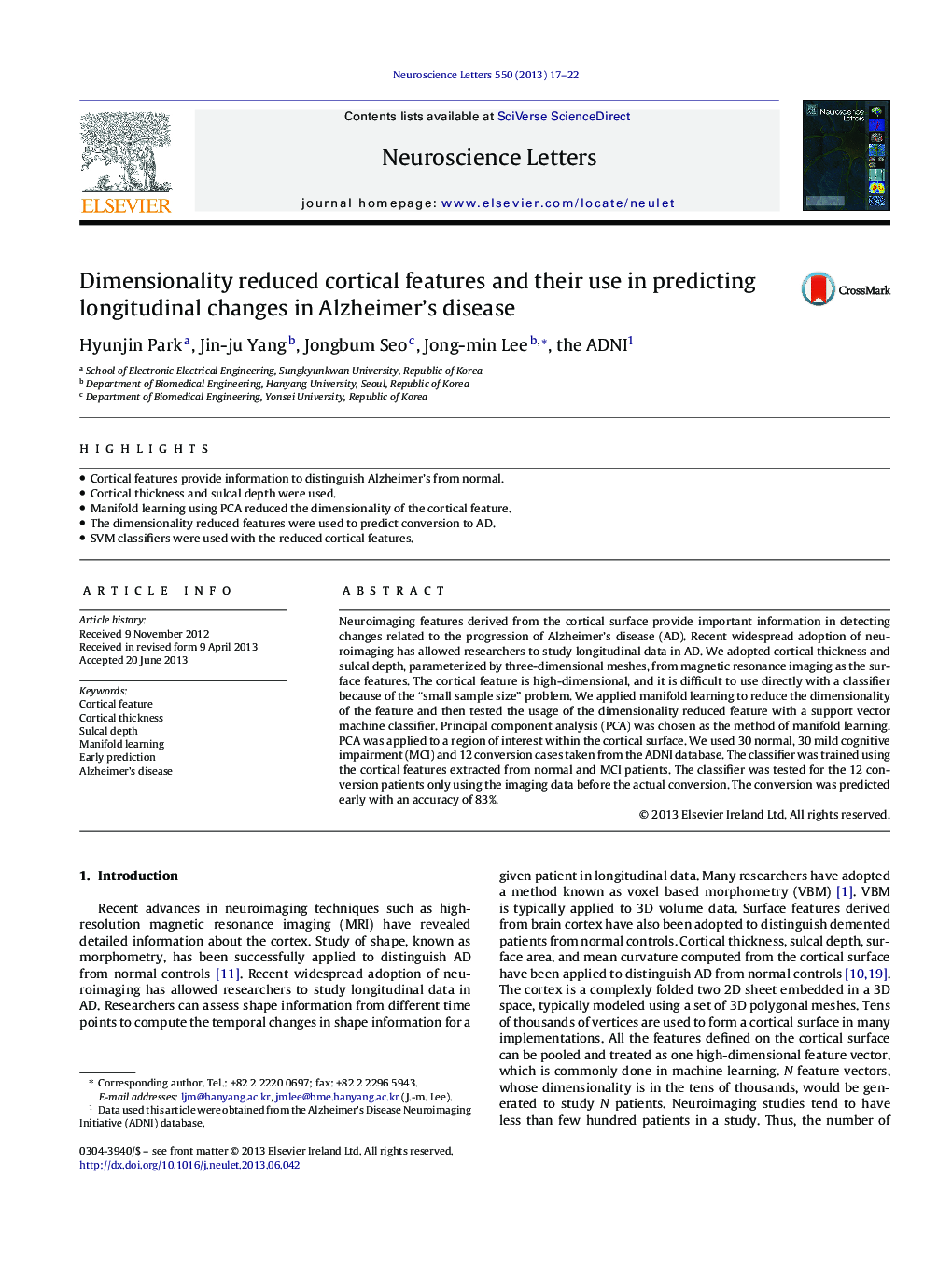| Article ID | Journal | Published Year | Pages | File Type |
|---|---|---|---|---|
| 6282855 | Neuroscience Letters | 2013 | 6 Pages |
Abstract
Neuroimaging features derived from the cortical surface provide important information in detecting changes related to the progression of Alzheimer's disease (AD). Recent widespread adoption of neuroimaging has allowed researchers to study longitudinal data in AD. We adopted cortical thickness and sulcal depth, parameterized by three-dimensional meshes, from magnetic resonance imaging as the surface features. The cortical feature is high-dimensional, and it is difficult to use directly with a classifier because of the “small sample size” problem. We applied manifold learning to reduce the dimensionality of the feature and then tested the usage of the dimensionality reduced feature with a support vector machine classifier. Principal component analysis (PCA) was chosen as the method of manifold learning. PCA was applied to a region of interest within the cortical surface. We used 30 normal, 30 mild cognitive impairment (MCI) and 12 conversion cases taken from the ADNI database. The classifier was trained using the cortical features extracted from normal and MCI patients. The classifier was tested for the 12 conversion patients only using the imaging data before the actual conversion. The conversion was predicted early with an accuracy of 83%.
Related Topics
Life Sciences
Neuroscience
Neuroscience (General)
Authors
Hyunjin Park, Jin-ju Yang, Jongbum Seo, Jong-min Lee, the ADNI the ADNI,
